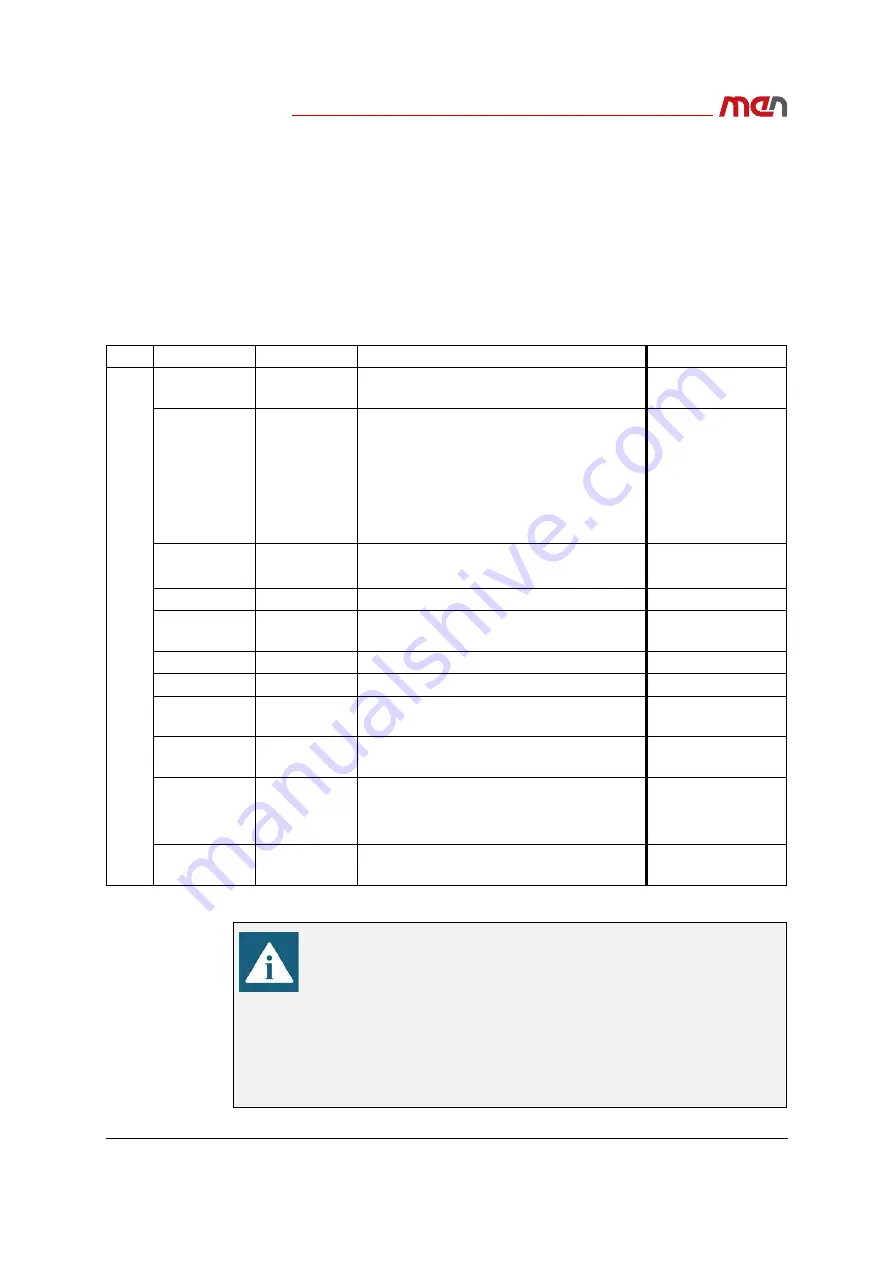
Hardware/Software Interface
Page 62
4
Hardware/Software Interface
This chapter is intended for software developers or board integrators who need deeper
knowledge of the implementation details of the BL70S interfaces and its internal
connections.
4.1
SMBus/I2C Devices
Table 29.
SMBus/I2C devices
Note: All other addresses and devices are reserved for factory usage.
Bus 8-Bit Address 7-Bit Address
Function
MDIS Example Call
1
0x3E
0x1F
Board temperature sensor
smb2_eetemp
smb2_1
0x40
0x20
I/O Expander, used for
Ignition status
PCIe Mini Card power cycle
SIM card switching
User LEDs
Watchdog reset
smb2_ctrl smb2_1
0x42
0x21
I/O Expander, used for
SATA LED control
smb2_ctrl smb2_1
0x64
0x32
System RTC (ERTC) RX-8571
0x9A
0x4D
Board Management Controller (BMC)
xm01bc_ctrl
xm01bc_1
0xA0
0x50
SPD EEPROM channel A
-
0xA4
0x52
SPD EEPROM channel B
-
0xAC
0x56
EEPROM, includes BL70S information, e.g.,
serial number and the date of production
smb2_boardident
smb2_1
0xAE
0x57
CPU board (SC25) information EEPROM with
thermal sensor
smb2_boardident
smb2_1
0xC0
0x60
PoE PIC, used for
PoE interface control
PoE device switching
smb2_poe smb2_1
0xE0
0x70
SATA SGPIO FPGA
smb2_ctrl
smb2_1
Note on 8-Bit/7-Bit Addressing
8-bit addressing
is compliant to the Windows nomenclature. The last
bit, which is used as the read/write bit, is added to the address
(0 = write, 1 = read).
If you use MDIS driver software, use 8-bit addresses, with any OS.
7-bit addressing
is used, e.g., under Linux. A ’0’ is added at the
beginning of the address so that all consecutive address bits are moved
one bit to the right.
If you use standard I2C commands under Linux, use 7-bit addresses.






























